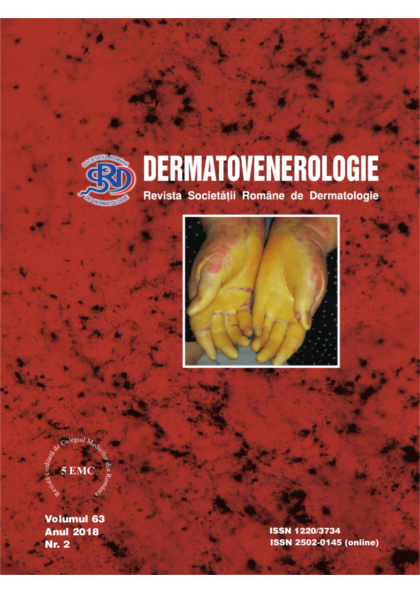Introduction
Cutaneous squamous cell carcinoma (cSCC) is the
second most common skin cancer and its incidence is rising
worldwide. Although most cSCC cases have an excellent
prognosis, a subset of high risk cSCC is associated with
increased recurrence and metastasis rates and a
considerably worse outcome.
Objective
To assess the clinical and histopathologic
characteristics and the severity profile of cSCCs diagnosed
in a tertiary referral center during a 5 year period.
Materials and methods
Based on the medical records of patients diagnosed
with cSCC in our clinic between January 2011 and
December 2015, variables like age, sex, anatomic location,
clinical and histopathologic features were analyzed.
Results
108 patients were identified, with a mean age of 72.28
± 9.77 years and a gender ratio (M/F) of 1.03. 62% of
cSCCs were located in the head and neck region. Tumor
diameter ranged from 0.3 to 6.5 cm, the mean diameter
being significantly larger in men. 41.6% were in situ SCC.
47.6% of invasive cSCCs were well differentiated and
52.4% moderately differentiated. 71.4% of invasive cSCCs
involved the deep dermis, 11.1% the hypodermis, and
12.7% the musculature. Invasion of the hypodermis and
musculature was more frequent in men. 86.7% of deeply
invasive cSCCs were located in the head and neck region.
Perineural and lymphatic invasion were uncommon. No
metastatic cSCC was diagnosed. All cSCCs were surgically
excised, achieving clear margins in 80.5% cases.
Conclusions
Patients often present with large and deeply invasive
cSCC, posing therapeutic difficulties and carrying higher
recurrence and metastatic risks.


